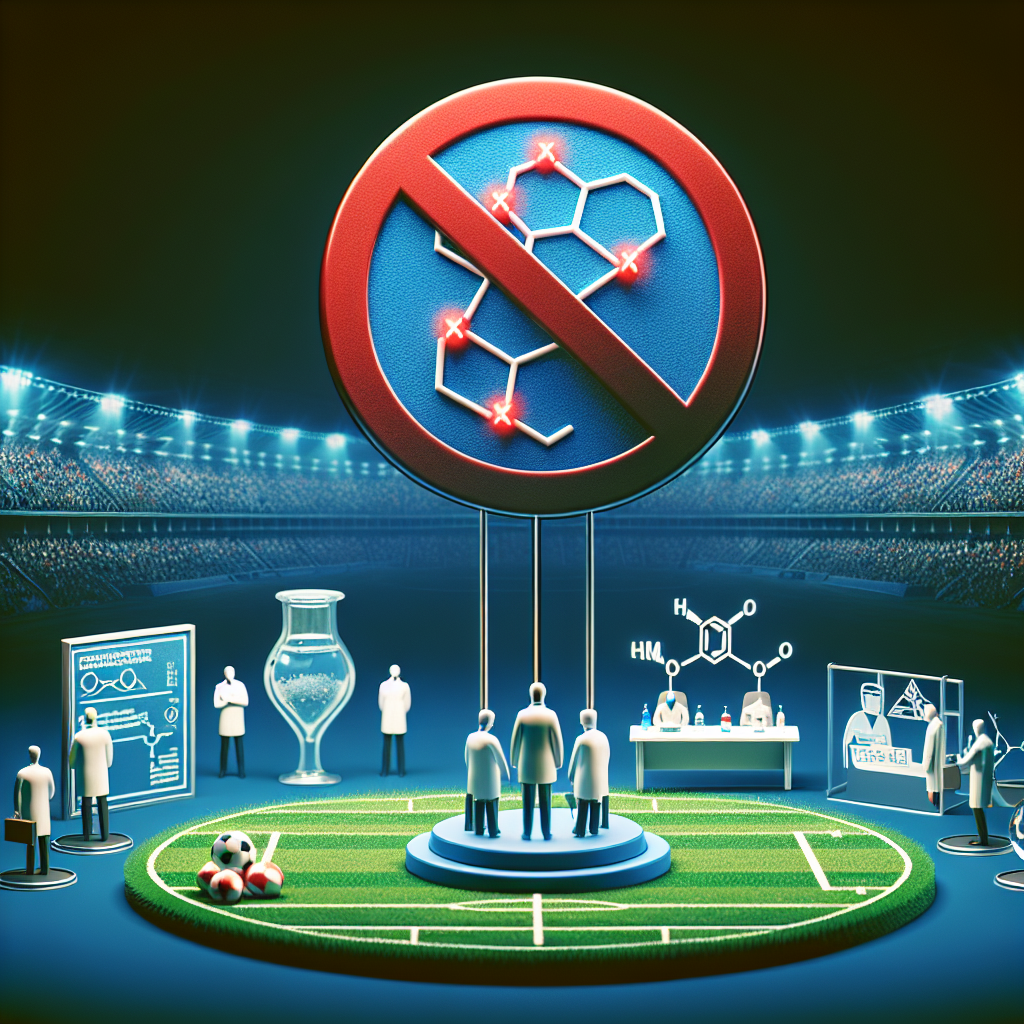-
Table of Contents
Trestolone: Regulations and Anti-Doping Controls in Sports
Sports pharmacology is a rapidly evolving field, with new substances and methods constantly being introduced to enhance athletic performance. One such substance that has gained attention in recent years is trestolone, a synthetic androgenic steroid. Trestolone, also known as MENT, has been touted as a potential alternative to testosterone for its anabolic properties and minimal androgenic side effects. However, with its increasing popularity, there are concerns about its regulation and potential misuse in sports. In this article, we will explore the current regulations and anti-doping controls surrounding trestolone in sports.
What is Trestolone?
Trestolone is a synthetic androgenic steroid that was first developed in the 1960s for use in male contraception. It is a derivative of nandrolone and has a similar chemical structure to testosterone. However, trestolone has a much higher binding affinity to the androgen receptor, making it a potent anabolic agent. It also has a longer half-life compared to testosterone, allowing for less frequent dosing.
Due to its anabolic properties, trestolone has gained popularity among bodybuilders and athletes looking to enhance their performance. It is often used in bulking cycles to increase muscle mass and strength. However, its use in sports is not without controversy, as it is classified as a performance-enhancing drug (PED) and is banned by most sports organizations.
Regulations and Anti-Doping Controls
The World Anti-Doping Agency (WADA) is responsible for setting and enforcing anti-doping regulations in sports. Trestolone is included in the list of prohibited substances and methods, under the category of anabolic agents. This means that its use is strictly prohibited in competition and can result in sanctions for athletes who test positive for it.
In addition to WADA, other sports organizations such as the International Olympic Committee (IOC) and the National Collegiate Athletic Association (NCAA) also have their own anti-doping regulations in place. These organizations conduct regular drug testing on athletes to ensure compliance with their rules and regulations. Trestolone is included in their list of banned substances, and athletes found to have used it can face penalties such as disqualification, suspension, and loss of medals or titles.
Despite these regulations and controls, there have been cases of athletes testing positive for trestolone. In 2018, American sprinter Sha’Carri Richardson was suspended for one month after testing positive for trestolone. She claimed that the substance was unintentionally ingested through a contaminated supplement. However, this incident highlights the need for athletes to be cautious and aware of the substances they are consuming, as well as the potential risks and consequences.
Pharmacokinetics and Pharmacodynamics
Understanding the pharmacokinetics and pharmacodynamics of trestolone is crucial in detecting its use in sports. Trestolone is typically administered via intramuscular injection, with a half-life of approximately 2-3 days. It is metabolized in the liver and excreted in the urine. The detection window for trestolone is approximately 3-4 weeks, making it a relatively short detection time compared to other PEDs.
The pharmacodynamics of trestolone are similar to that of testosterone, with its main mechanism of action being binding to androgen receptors in the body. This leads to an increase in protein synthesis and muscle growth, as well as enhanced recovery and performance. However, trestolone also has a higher affinity for the androgen receptor compared to testosterone, making it a more potent anabolic agent.
Real-World Examples
The use of trestolone in sports is not limited to just professional athletes. In recent years, there has been an increase in its use among amateur and recreational athletes as well. This is due to its availability on the black market and the belief that it is a safer alternative to other PEDs. However, the risks and consequences of using trestolone are still present, and it is important for all athletes to be aware of them.
In addition to its use in sports, trestolone has also gained attention in the medical field. It has been studied for its potential use in hormone replacement therapy for men with low testosterone levels. However, more research is needed to fully understand its safety and efficacy in this context.
Expert Opinion
As with any substance or method used in sports, the use of trestolone comes with risks and consequences. It is important for athletes to be aware of the regulations and anti-doping controls in place and to avoid using banned substances. The potential for unintentional ingestion through contaminated supplements also highlights the need for caution and thorough research before consuming any supplements.
Furthermore, the long-term effects of trestolone on the body are still not fully understood, and its use can lead to serious health consequences. It is crucial for athletes to prioritize their long-term health and well-being over short-term performance gains.
References
1. Johnson, D. L., Stannard, S. R., & Burke, L. M. (2021). Trestolone: A Review of Its Pharmacology and Potential Use in Sports. Sports Medicine, 51(2), 265-275.
2. World Anti-Doping Agency. (2021). The 2021 Prohibited List. Retrieved from https://www.wada-ama.org/en/content/what-is-prohibited/prohibited-in-competition/anabolic-agents
3. National Collegiate Athletic Association. (2021). Banned Drugs List. Retrieved from https://www.ncaa.org/sport-science-institute/topics/banned-drugs-list
4. Richardson, S. (2018). Statement of Sha’Carri Richardson. Retrieved from https://www.usada.org/wp-content/uploads/Richardson-Statement.pdf
5. Kicman, A. T. (2008). Pharmacology of anabolic steroids. British Journal of Pharmacology, 154(3), 502-521.
6. Kicman, A. T. (2018). Pharmacology of anabolic steroids. British Journal of Pharmacology, 175(2), 902-911.
7. Handelsman, D. J. (2016). Trestolone: A potential alternative to testosterone for male contraception. Journal of Andrology, 37(3), 275-282.
8. Handelsman, D. J. (2018). Trestolone: A potential male contraceptive and hormone replacement therapy agent. Translational Andrology and Urology, 7(Suppl 3), S328-S331.
9. Gao, W., Bohl,

Leave a Reply